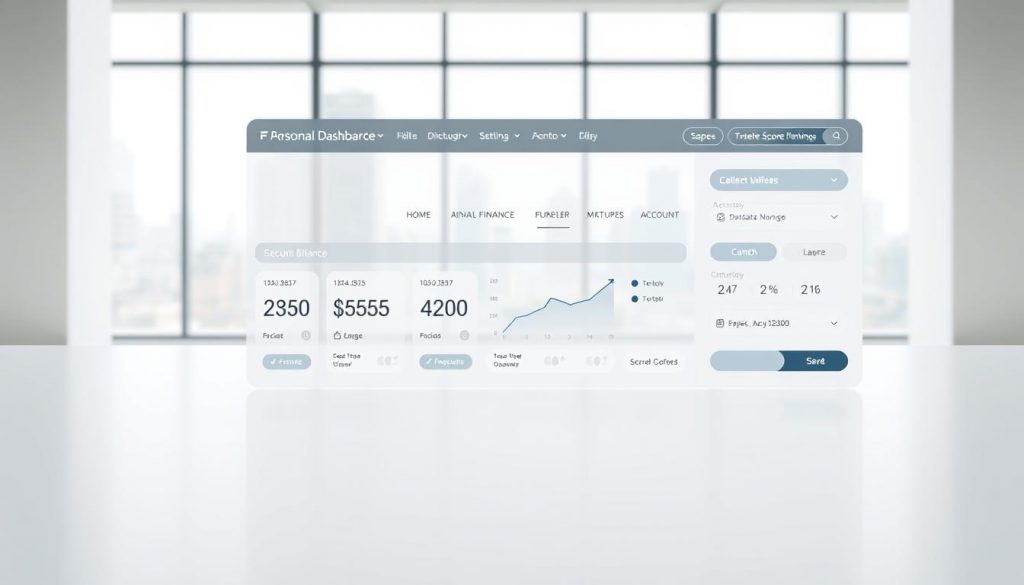Can a single app really replace a cluttered set of spreadsheets, bank logins, and late fees? Modern platforms now merge budgeting, saving, investing, and planning into one place. This shift turns many small tasks into a single, smarter workflow that learns with the user.
Readers will see which features matter and where they get the best value for time and money. The roundup covers Origin, Cleo, Albert, Alpha, Magnifi, Trim and Candlestick, and notes pricing, UK availability and bank links. It explains how tools like bill negotiation and savings automation cut admin and reduce fees.
These solutions blend automation with human expertise so users can make faster, clearer decisions. Expect guidance on compatibility, standout features, and what a financial assistant can realistically deliver in the UK market.
Key Takeaways
- One platform can replace multiple logins and simplify budgeting and investing.
- Look for features that save time, such as bill negotiation and automated savings.
- Pricing and bank connections vary in the UK; check integration before subscribing.
- Some services pair AI with human experts for complex planning or tax help.
- The guide will highlight where users get the best value for money and time.
Why AI matters now: the present state of personal finance in the UK
Rising household bills and tighter budgets have pushed many UK users towards automated budgeting tools. Inflation and higher living costs make simple account oversight less useful than active expense tracking.
When data is put to work, platforms automatically categorise spending, spot regular bills, and send timely alerts. This reduces manual effort and helps people avoid overdrafts or surprise fees.
Budgeting informed by continuous data can reveal seasonal peaks or one‑off costs. Those insights improve financial health by showing where to trim recurring expenses without large lifestyle changes.
Automation also cuts management overhead. With bank connections and secure links, users spend minutes checking progress rather than hours reconciling statements.
The market is moving fast: the sector is projected to reach $26.67bn by 2025, a sign that models and datasets will only get richer. Follow the next sections for practical ways to compare tools and match them to UK banking and spending patterns.
How AI transforms budgeting, saving, and investing
Modern models turn past transactions into a living roadmap that adjusts budgets as habits change. These systems learn from bank records to auto‑categorise spending and suggest realistic budget edits. That reduces manual work and saves time.
Automated budgeting and adaptive categorisation
Algorithms tag transactions and refine envelopes as they see recurring patterns. This means fewer corrections and clearer views of spending habits.
Tailored advice and timely recommendations
Guidance focuses on nudges, not lectures. Systems offer simple advice based on behaviour and upcoming bills to support better financial decisions.
Forecasts to prevent overdrafts and plan bills
Predictive cash‑flow tools project balances and flag risks early. Digit and Plum show how predictive savings and bill switching build buffers.
Investment discovery and management
Platforms like Alpha provide near‑real‑time signals while Magnifi uses natural‑language search to match risk and goals. Intelligent investment management blends profiling, diversification and rebalancing into plans linked to wider financial planning.
- Adaptive budgeting: learns and reduces edits.
- Forecasting: avoids fees and stabilises cash flow.
- Savings automation: small transfers that add up — automated savings.
| Function | How it works | Example | Value |
|---|---|---|---|
| Categorisation | Auto‑tags transactions | Algorithm envelopes | Less admin |
| Forecasting | Predicts balances & bills | Digit model | Fewer overdrafts |
| Investing | Signals & research | Alpha / Magnifi | Aligned portfolios |
| Savings | Pattern‑driven transfers | Plum | Gradual buffers |
What to look for in AI finance apps: key features, security, and ease of use
Not all platforms are equal: prioritise features that reduce admin and protect your accounts. The right choice blends automation, clear planning tools and strong safeguards so day‑to‑day management is simpler and safer.
Must‑have features
Accurate categorisation, goal setting, bill reminders and savings automation are the essentials. These key features remove manual work and keep progress visible.
Security and compliance
Encryption in transit and at rest, granular permissions and two‑factor authentication are baseline expectations. UK users should check open banking compatibility and whether the app links to their accounts securely.
User experience and actionable recommendations
Look for clean design, simple navigation and customisable alerts. The best tools turn insights into practical steps — such as suggested transfers or bill switches — and make pricing transparent.
| Area | What to check | Impact | Example |
|---|---|---|---|
| Categorisation | Accuracy & auto‑rules | Less admin | Automated envelopes |
| Security | Encryption, 2FA, consent | Data safety | Open Banking links |
| Planning | Multi‑goal & scenarios | Clear decisions | Goal forecasts |
| Integrations | Exports & multi‑device sync | Smoother management | CSV / bank links |
All‑in‑one financial assistants: consolidating your financial life
Bringing tax, estate and investing tools into one dashboard simplifies everyday financial planning. Origin bundles tax filing, estate planning, budgeting and investment management with a conversational sidekick that answers questions and suggests next steps.
Origin — tax, estate, budgeting, and investment management in one app
Origin centralises accounts so users can align goals, track progress and receive tailored advice. Guidance covers retirement paths, building emergency funds and portfolio optimisation.
Couples and household finance: shared transparency and planning
The Couples feature gives partners shared visibility while respecting permissions. It helps reduce misunderstandings by showing joint budgeting targets and progress towards common goals.
Pricing and value: reducing multiple tools and fees
Origin costs $12.99/month or $99/year with a 7‑day free trial. One subscription can replace several tools, simplifying renewals and lowering overall fees.
- Reduces app sprawl by centralising workflows to better manage money.
- Intuitive setup and goal workflows speed adoption for individual financial needs.
- Shared views respect privacy through permissioned linking of accounts.
Budgeting and savings apps that improve financial habits
Simple automation and clear prompts make it easier for users to stick to a plan.
Cleo uses a chat‑first interface to lower the barrier to budgeting. It tracks spending, sets savings goals, helps build credit and sends bill reminders. A free tier exists, with Cleo Plus at £/ $5.99 per month for extra features.
Cleo — conversational budgeting, goals and credit building
The chat format makes budgeting feel natural and fast. Users ask questions, see quick summaries of spending habits and create goals without complex menus.
Albert — smart savings with human financial guidance
Albert analyses income and spending, automates transfers and flags subscriptions. The Albert Genius tier (£/ $14.99/month) adds human financial advisors for tailored advice on debt, risk and savings steps.
Plum and Digit — automated savings and bill switching
Plum automates savings and can switch bills in the UK to cut costs. Digit uses predictive analysis to move only what’s safe to save, protecting cash flow and building cushions in savings accounts.
| App | Main feature | Price example | Best for |
|---|---|---|---|
| Cleo | Conversational budgeting, bill reminders | Cleo Plus $5.99/mo | Quick goal setting |
| Albert | Automated savings + human financial advisors | Genius $14.99/mo | Tailored advice |
| Plum | Auto savings & bill switching (UK) | Free / paid tiers | Hands‑off savings |
| Digit | Predictive “safe to save” transfers | Subscription tiers | Cash‑flow protection |
Whether ’re starting from scratch or refining an existing plan, these tools suit different attention spans. A simple example: small, regular transfers tied to spending can form lasting habits and build confidence over time.
Investment-focused apps delivering data-driven decisions
Real‑time market feeds and plain‑English search change how people discover and verify investments. These tools speed research and make complex data easier to act on.

Alpha by Public — real‑time analysis for stocks and ETFs
Alpha gives live market signals and instant answers to queries. Premium costs $8/month, with a free upgrade if a $50k balance is met.
Its strength is fast context: users can see why a stock moved and how ETFs compare in minutes.
Magnifi — natural‑language investment search and risk explanations
Magnifi turns plain English questions into research. For example, asking “best funds for long‑term growth” returns options with clear risk notes. Subscription is about $14/month.
Candlestick — weekly AI stock picks tailored to risk profile
Candlestick issues weekly picks that match risk preferences. The $9.99/month tier adds more signals; a free version is available for casual users.
“Tools can sharpen research, but investors must match choices to goals and horizon.”
Practical advice: compare watchlists, alerts and portfolio views to see how recommendations turn into actions. Use guardrails—stop‑loss rules and diversification—and align contributions with app suggestions to avoid impulsive spending.
| Tool | Main strength | Price | Best for |
|---|---|---|---|
| Alpha by Public | Real‑time signals & instant context | $8/mo (or free >$50k) | Active traders & ETF research |
| Magnifi | Natural‑language research & risk notes | $14/mo | Investors who prefer plain‑English queries |
| Candlestick | Weekly tailored stock picks | $9.99/mo (free tier) | Users seeking curated ideas |
Note for UK readers: verify access, pricing and tax‑wrapper compatibility before subscribing. These tools aid investment research and monitoring but do not remove risk.
Cutting costs fast: subscription control and bill negotiation
A quick audit of subscriptions and bills often uncovers dozens of small charges that silently drain budgets.
Trim connects to bank accounts to spot recurring charges and then negotiates bills such as internet and cable. Basic features are free; successful negotiations typically use a success fee. This process targets telecoms and utilities and can free cash for savings or debt repayment.
Clarity Money — clearer subscriptions, practical cuts
Clarity Money uses smart scans to surface redundant subscriptions and offers cancellation options. It focuses on reducing spend without major lifestyle changes, giving users actionable suggestions they can accept or ignore.
- Subscription audits reveal unused services, duplicate trials and inflated plans that increase monthly expenses.
- Automation keeps monitoring statements, saving time so people need not comb through accounts each month.
- Reclaimed funds can boost emergency buffers, pay high‑interest debt or fund short‑term goals.
- Human financial factors matter: comfort with negotiation and willingness to switch providers affects outcomes.
- Example: cancelling overlapping media services and downgrading broadband can free about £20–£40/month.
AI-driven personal finance apps: helping consumers take control of money.
Turning raw transaction data into small tasks helps people form lasting financial habits without extra stress.
Modern assistants map category‑level insights into clear action: goal‑backed budgets, check‑ins and simple nudges. This makes it easier for users to make better financial decisions every week.
Building emergency funds, paying down debt, and staying on track over time
Tools link spending analysis to prioritised steps. They show how to focus on building emergency buffers to stabilise a user’s financial life.
Debt sequencing features suggest which balances to pay first and set automated payments to reduce balances with minimal admin.
- Actionable steps: translate insights into weekly transfers and milestone reminders.
- Goal setting: create realistic goals with clear timeframes and checkpoints.
- Habit formation: frequent light interactions build routines without overload.
- Planning discipline: monthly reviews and category tweaks keep budgeting current.
- Life changes: plans adjust if a user moves home, starts a new job or adds a child.
In short, the best tools sustain momentum by nudging action, celebrating wins and helping people manage money in a steady, goal‑driven way.
UK buyer’s guide: availability, pricing, and account integration
Choosing the right tool depends on local bank links, pricing tiers and how reliably data syncs. UK users should confirm open banking support for their bank or credit union to get live balances, accurate categorisation and simple account linking.

Compatibility with UK banks and open banking
Open banking enables secure links to current accounts and credit accounts, so balances and transactions refresh automatically. Verify your bank is supported before signing up to avoid limited data or manual uploads.
Free vs paid tiers: what typically changes
Some services offer free tiers (Cleo, Trim, Candlestick) while others are subscription only (Origin, Magnifi, Albert). Premium plans usually unlock advanced analytics, negotiation services or human guidance.
- Check export options, account limits and update frequency to view all your finances in one place.
- Look for budgeting essentials—goals, bill reminders and alerts—at each tier to judge value.
- Use free trials and refund windows to test data quality and stability before committing.
| Area | What to check | Why it matters |
|---|---|---|
| Bank links | Open Banking support | Live balances & reliable categorisation |
| Pricing | Free vs premium features | Advanced analysis or human help |
| Fees | Success/fair‑use charges | Negotiate vs subscription value |
The future of AI finance: predictive planning and behavioural nudges
Next‑generation planning flips yearly reviews into continuous, anticipatory maps that steer spending weeks or months ahead. These systems forecast issues months in advance and adjust saving and spending guidance dynamically.
Anticipatory guidance: dynamic plans that adjust before problems arise
Anticipatory guidance turns static budgets into living financial planning frameworks. When a large bill or dip in income is likely, the plan reroutes savings and suggests small swaps.
Behavioural finance integration to improve day‑to‑day choices
Behavioural prompts counter bias by pausing impulse spends after stressful days or offering alternatives for high‑risk categories.
These nudges reinforce positive habits and make steady progress without strict limits.
Complete integration: spending, taxes, insurance and estate planning
Full integration links spending, tax planning, insurance and estate steps into one adaptive plan. A big purchase can trigger tax checks, portfolio tweaks and short‑term budgeting shifts automatically.
- Personalised financial recommendations evolve as new data arrives, so users need fewer manual reviews.
- Timely insights save time and cut stress by surfacing the right prompt at the right moment.
- Budgeting stays central, but becomes more predictive and less reactive as features mature.
Privacy, regulation, and trust: managing your data responsibly
Clear rules about who sees what data are as important as strong encryption. Platforms must explain consent, storage and access in plain terms so people can choose confidently.
Encryption, consent, and transparent data usage policies
Strong practices include end‑to‑end encryption, two‑factor authentication and consent‑driven linking via Open Banking. Read‑only links to bank accounts limit exposure and keep credentials private.
Check what is stored versus transiently processed. Confirm retention, export and deletion options before granting access.
Understanding alerts, notifications, and how recommendations are generated
Providers should disclose how alerts are triggered and what model inputs drive suggestions. This makes recommendations less of a black box and helps users weigh automated advice against their own judgement.
- Expect clear consent flows, encryption standards and third‑party access controls for sound financial management.
- Verify when human financial experts may view limited records, how that access is logged, and how it can be revoked.
- Review notification content and shared household permissions to keep budgeting visibility appropriate.
- Look for published security documentation and routine audits as signals of trustworthy tools and financial tools.
Conclusion: AI-driven personal finance apps: helping consumers take control of money.
A small set of well‑matched tools can deliver big gains in time, clarity and long‑term planning.
Across the roundup, solutions such as Origin, Cleo, Albert, Plum, Digit, Alpha, Magnifi, Candlestick, Trim and Clarity Money show different paths to improved personal finance. Some focus on budgeting and automation; others deepen investment research or negotiation.
Practical next steps: shortlist tools that match your goals, check UK bank links and test workflows before subscribing. Combine automation for routine spending with research tools for investment decisions.
Disciplined planning, regular reviews and simple savings habits build resilient buffers, reduce debt and keep finances moving forward with less effort.
For more articles on our Finance Blog, please follow the link


